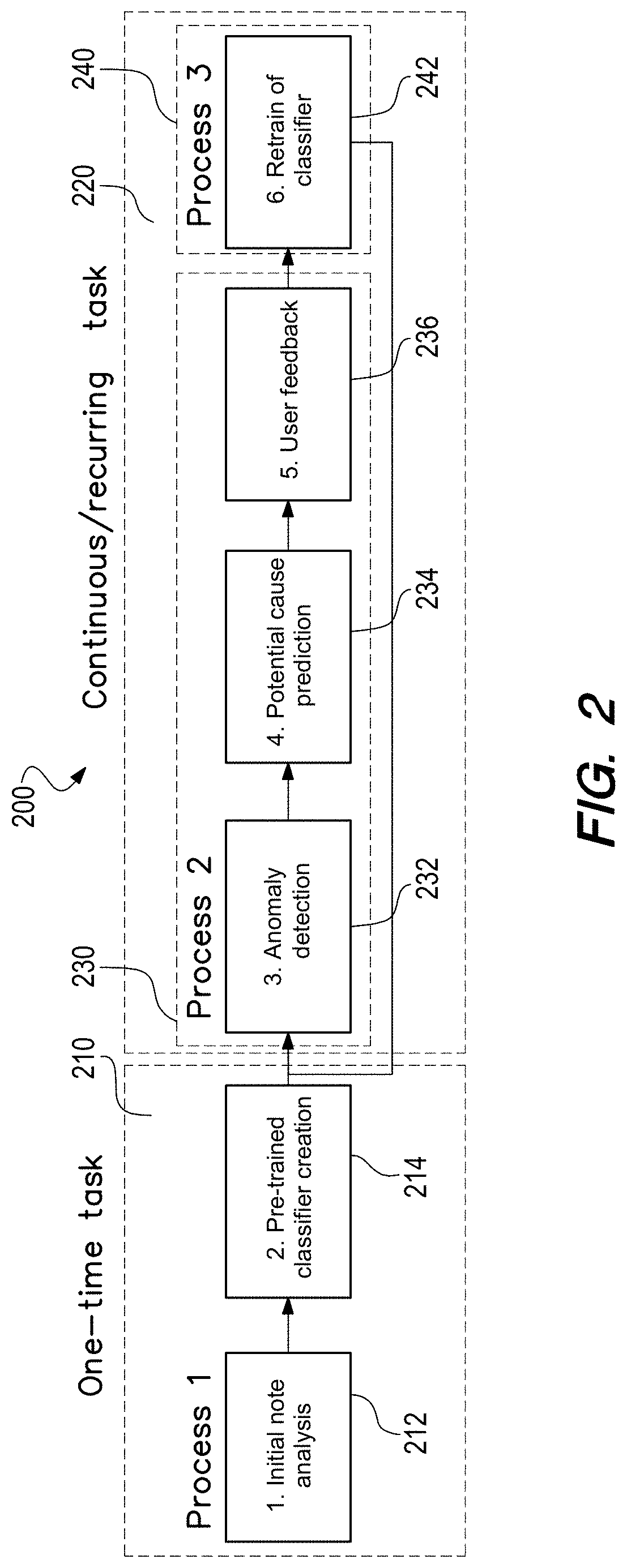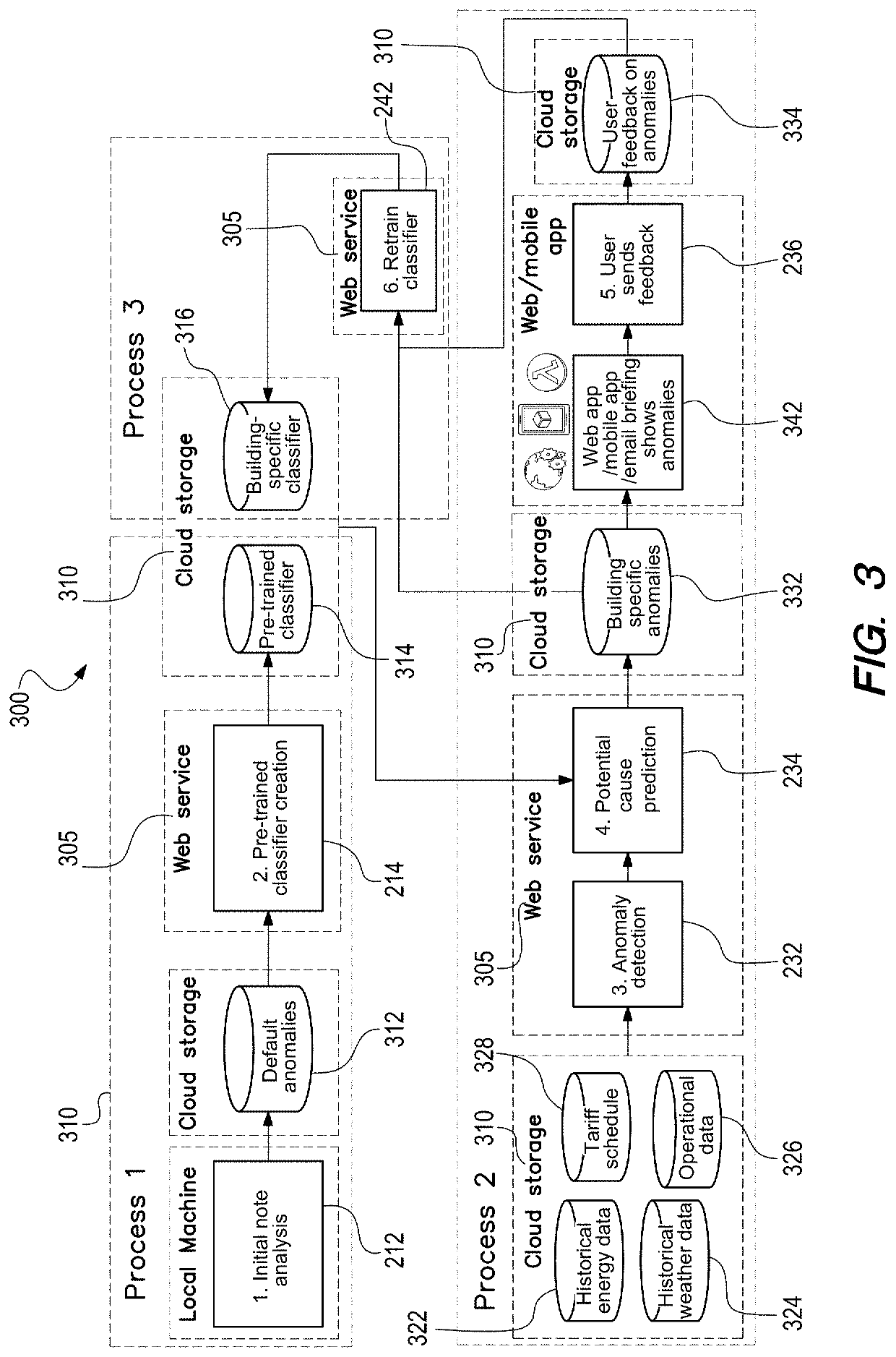Automatic Diagnostics Generation in Building Management
- Summary
- Abstract
- Description
- Claims
- Application Information
AI Technical Summary
Benefits of technology
Problems solved by technology
Method used
Image
Examples
Embodiment Construction
[0037]The present disclosure describes new approaches to building operation optimization. Building optimizations are obtained with machine learning (also referred to herein as automatic diagnostics).
Automatic Diagnostics
[0038]In an embodiment, there are three steps for automatic diagnostics: first, collect all human inputs (notes, comments, work orders, etc.) and sensor data (utility metering, equipment submetering, environment monitoring, etc.). Second, combine them and draw insights on the highest leverage optimizations being performed in the building and develop a model to automatically diagnose issues and suggest optimal ways for users to operate their facilities by applying machine learning techniques.
[0039]Embodiments of the present disclosure provide a new and improved automatic diagnostic of a building. Computer-implemented methods, systems, platforms and devices are provided to optimize building management including energy usage. Aspects and features in embodiments include ...
PUM
 Login to View More
Login to View More Abstract
Description
Claims
Application Information
 Login to View More
Login to View More - R&D
- Intellectual Property
- Life Sciences
- Materials
- Tech Scout
- Unparalleled Data Quality
- Higher Quality Content
- 60% Fewer Hallucinations
Browse by: Latest US Patents, China's latest patents, Technical Efficacy Thesaurus, Application Domain, Technology Topic, Popular Technical Reports.
© 2025 PatSnap. All rights reserved.Legal|Privacy policy|Modern Slavery Act Transparency Statement|Sitemap|About US| Contact US: help@patsnap.com



